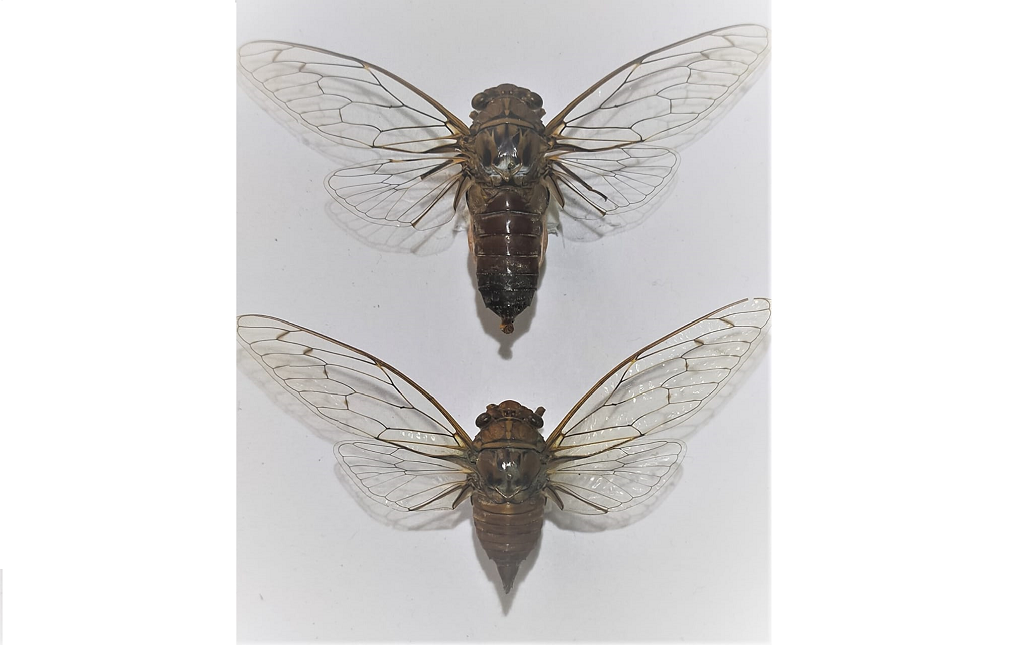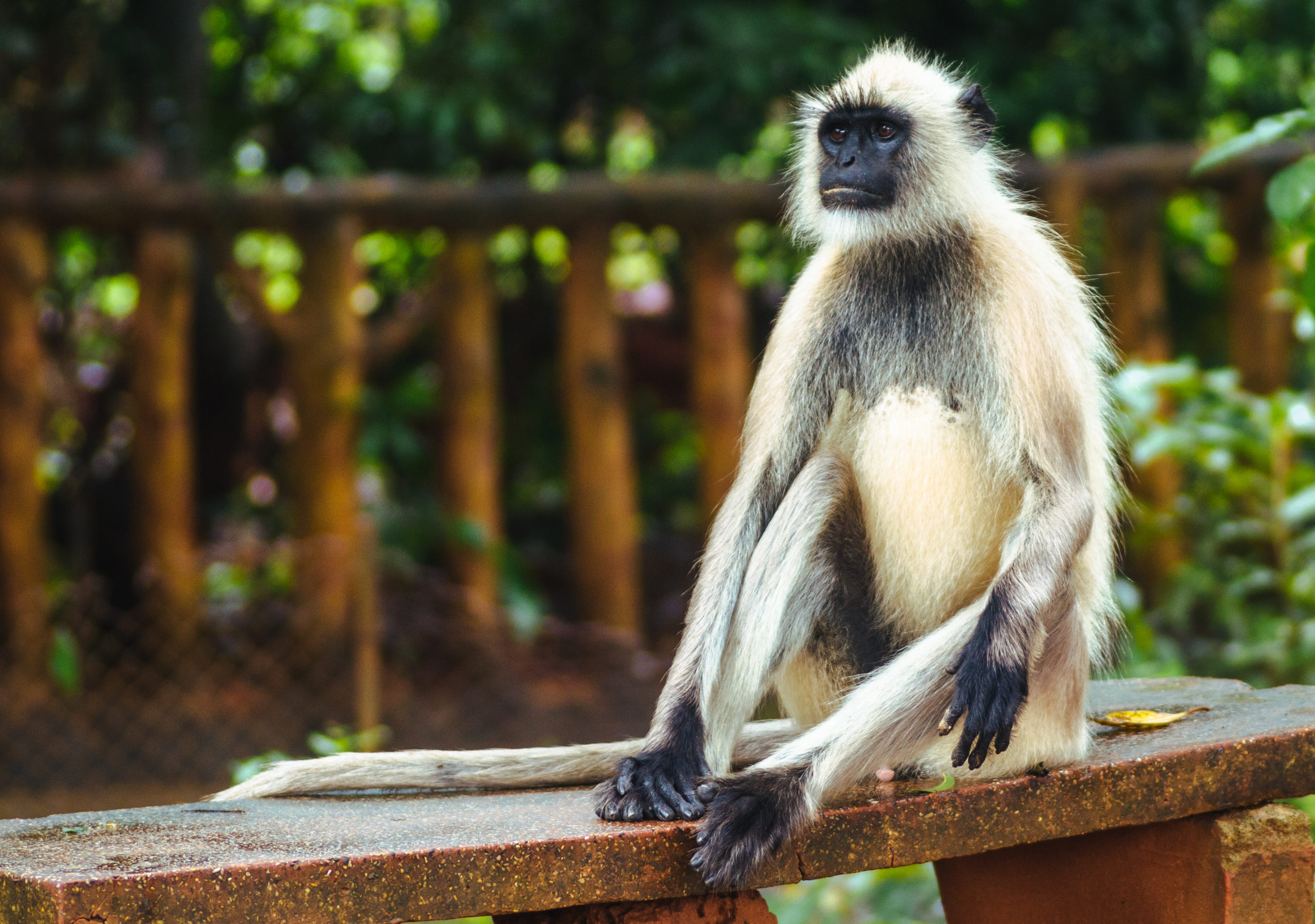ForumIAS announcing GS Foundation Program for UPSC CSE 2025-26 from 19 April. Click Here for more information.
Contents
- 1 Prunus dinabandhuana
- 2 Ariosoma indicum
- 3 Vaquita Porpoise
- 4 Purple Frog
- 5 Palmking (Amathusia phidippus)
- 6 Indian Tent Turtles
- 7 Ganoderma lucidum (Magical Mushroom)
- 8 Manda Buffalo
- 9 Dugongs
- 10 Hybodontshark
- 11 Greater One-Horned Rhino
- 12 Dhole
- 13 Platyomia kohimaensis – a new Cicada species
- 14 Hoplosebastes Armatus
- 15 Bengal Floricans
- 16 Allium negianum
- 17 Georissa
- 18 Aborichthys
- 19 Gray or Hanuman Langur
- 20 Snow leopards
Dear Friends,
This post is a part of our current affairs series for the UPSC IAS Prelims 2022. In this post, we have covered the all Important Environmental initiatives in news. This post covers the current affairs of September, October 2021 and April 2022 months.
To Read Other Current Affairs Compilations for Prelims 2022– Click here
Prunus dinabandhuana
News
Scientists from Manipur have found a new plant species of ‘Cherry Blossom’. They have named the plant species as ‘Prunus dinabandhuana’ as a mark of respect and for the outstanding contributions of scientist Dr Dinabandhu Sahoo.
About Cherry Blossom
The Cherry Blossom or ‘Sakura’ is the national flower of Japan. India has become the 28th country in the world to be part of the Sakura plantations.
About Prunus dinabandhuana
It is a new plant species of ‘Cherry Blossom’. It grows up to 25-30 meters in dense mixed evergreen forest and unlike the Japanese Cherry Blossom which blooms during March-April, this new species blooms in November.
Reason for naming plant species after Scientist Dr Dinabandhu Sahoo
Due to Dr Sahoo’s efforts, Cherry Blossom is now available in six of the eight Northeastern States, excluding Assam and Tripura.
Moreover, in 2016, Dr Sahoo organized India’s first ‘Cherry Blossom Festival’ in Shillong which attracted lakhs of people, and subsequently, it became an international event for the past six years.
Ariosoma indicum
News
A group of Indian scientists have discovered a new species of eel named “Ariosoma indicum” from the Kalamukku and Digha Mohana fishing harbours in Kerala and West Bengal respectively.
About Ariosoma indicum

Ariosoma Indicum is an eel species that belongs to the Congrid eels group. The term Indicum means that it was found in India.
Note: There are seven species of Ariosoma genus documented in India which includes this newly identified eel. Globally, there are 223 species in this genus.
Distribution: It is possibly distributed along the Indian coast including the coastal waters of Kerala and West Bengal.
Features
It has a greenish-brown body with faint dark bands on the dorsal portion of the head. It also has minute dark pigmentation patches on the extremities of the lower jaw.
Vaquita Porpoise
News
According to the United States Commission for Environmental Cooperation(CEC), Vaquita Porpoise is nearing extinction and immediate measures are needed to save the remaining population.
Note: Porpoises are among the smallest members of the cetacean family (whales, porpoises and dolphins). They are only distant relatives of dolphins (they last had a common ancestor roughly 15 million years ago).
About Vaquita Porpoise

Vanquita Porpoise is the world’s smallest cetacean.Its name means “little cow” in Spanish.
Conservation status:
- IUCN Red List: Critically Endangered
- CITES: Appendix I
Habitat: Found only in the northern Gulf of California (Sea of Cortez) in Mexico. Most commonly seen in shallow waters up to 50 meters deep.
Features
Vaquita Porpoise has a dark ring around the eyes is its most striking feature, along with a proportionally large dorsal fin.
It is unique among the porpoises as it is the only species of that family found in warm waters.
Like many other species of porpoise, vaquita tend to be shy and elusive, avoiding boats when approached.
Threats: The vaquita population has been in sharp decline for decades, recently accelerated by illegal fishing with gill nets for the vulnerable totoaba, a large fish sought after for its swim bladder.
Purple Frog
News
New research has been conducted by a biologist on Purple Frog.
About the Purple Frog

The purple frog (Nasikabatrachus sahyadrensis), Indian purple frog or pignose frog is a frog species of the genus Nasikabatrachus.
Conservation status:
IUCN Status: Endangered
Discovered in: It was first discovered in 2003 in the Idukki district of Kerala by S.D. Biju from the Tropical Botanic Garden and Research Institute, India and Franky Bossuyt from Brussels.
Distribution: The frog is endemic to the Western Ghats. Its distribution limited mainly to Kerala and some parts of Tamil Nadu.
Significance: The purple frog is a unique animal. This frog has an evolutionary history that goes back 120 million years — this is one of the oldest lineages among all living frogs on Earth. Species with such old lineages are termed a ‘living fossil’.
– Human evolution has taken place over six million years, so consider what a major chunk of Earth’s history the purple frog’s 120 million years covers.
– For instance, the DNA of this frog witnessed many great events that happened on Earth over millions of years such as huge tracts of land split into continents, the Himalayas were formed, dinosaurs going extinct and placental mammals evolved.
Features
Lives Underground: This is a fossorial species-that lives underground emerging just once a year. It has physical adaptations that help it survive in such extreme conditions.
Breeding Activity: Its breeding activity coincides with pre-monsoon showers. The male frogs take their cue from these and emerge from their burrows to call potential partners — these calls can be heard up to 100 meters away.
Sensitive to Disturbances: These animals are very sensitive to disturbances. Any interference with their calling behaviour withdraws them into their burrows.
Threats: The greatest threat to it is habitat destruction from human activities including agricultural expansion, construction and road building with dam reservoirs also causing the submergence of its habitat.
Palmking (Amathusia phidippus)
News
The rare butterfly Palmking (Amathusia phidippus) was sighted for the first time in Tamil Nadu.
About the Palmking (Amathusia phidippus)

Palmking is a butterfly species that belongs to the Nymphalidae sub-family. It was first recorded in South India by British scientist H.S.Ferguson in 1891. More than a century later, it was rediscovered in 2007.
Characteristics: This butterfly is characterized by its brown colour and dark bands and is described as reclusive, mostly resting in the shade.
– It is not easy to spot a Palmking because its wood colour makes for easy camouflage, and it rarely spreads its wings.
Diet: Palmking feeds on palm, coconut and calamus varieties of plants.
Distribution: This butterfly is widely distributed across parts of India, Myanmar, Indo China, Peninsular Malaysia and Thailand. It is also found in the Indonesian archipelago and the Philippines.
– In India, Palmking sightings were recorded in the forests of Arippa, Shendurney, Periyar Tiger Reserve in the south of Western Ghats.
Indian Tent Turtles
News
The Minister of Environment, Forest & Climate Change has informed Rajya Sabha that there are no reports to indicate that the Indian tent turtle is on the verge of extinction due to illegal mining in Narmada River.
About Indian Tent Turtle

Indian tent turtle (Pangshura tentoria) is a species of turtle in the family Geoemydidae.
Conservation status:
- IUCN Status: Least Concern
- Wildlife Protection Act,1972: Schedule 1
- CITES: Appendix II
Geographical Range: The species is endemic to India and Bangladesh.
Habitat: The preferred habitats are freshwater rivers and swamps.
Threats: Due to the attractive appearance of the species, they are illegally traded in the pet market.
Ganoderma lucidum (Magical Mushroom)
News
Worldwide, attempts are being made to popularize Ganoderma lucidum (Magical Mushroom) for business and livelihood, by cultivating it on wood logs and sawdust.
About Ganoderma lucidum (Magical Mushroom)
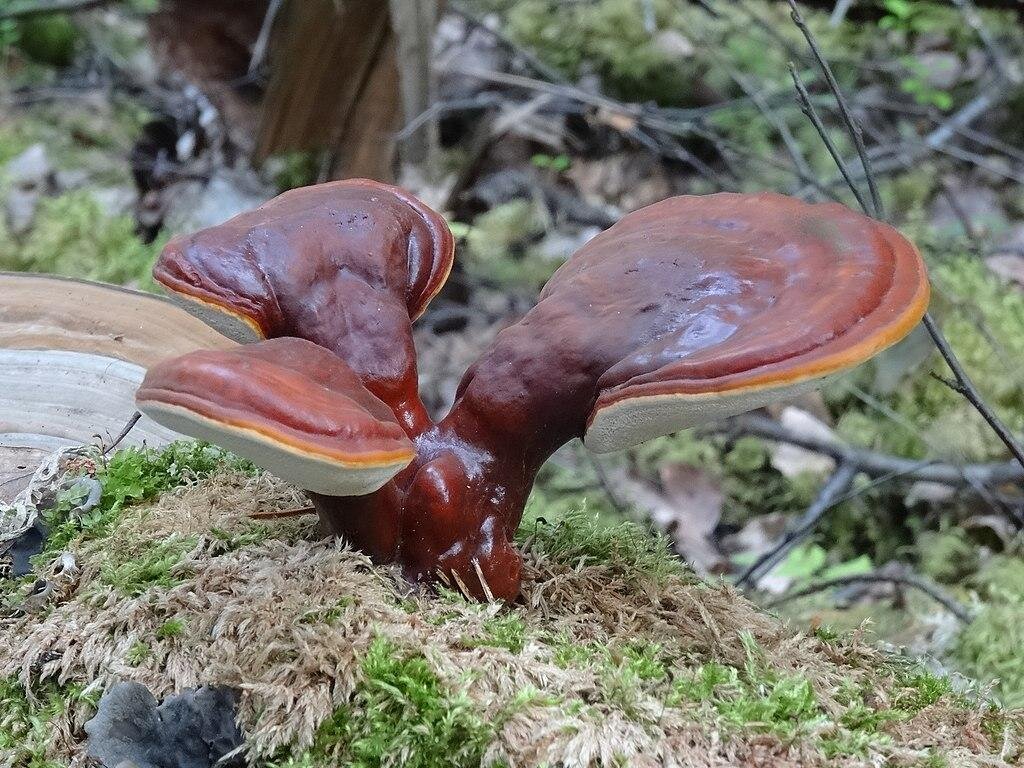
It is a medicinal mushroom in use for centuries. It is globally known as “red reishi mushroom”.
The history of consumption of this mushroom can be traced back to 5,000 years ago in China.
It also finds mentioned in the historical and medical records of countries like Japan, Korea, Malaysia and India.
It has also earned several nicknames such as “mushroom of immortality”, “celestial herb” and “auspicious herb”.
The uniqueness of Magical Mushroom
Unlike normal mushrooms, the peculiar character of this mushroom is that it grows on wood or wood-based substrate only.
It thrives well in warm and humid climates and grows preferably in mixed forests of subtropical to temperate regions.
Uses of Magical Mushrooms
It is used to heal diseases like diabetes, cancer, inflammation, ulcer as well as bacterial and skin infections.
Apart from medicinal uses, it is also used as a base material for manufacturing products such as tea, coffee, energy supplements, health boosters, beverages, baked goods and anti-ageing cosmetics.
Cultivation of Magical Mushroom
Its mass production is restricted to countries like China, Japan, Korea, Malaysia, Thailand and the United States of America.
Awareness regarding Ganoderma is spreading and the demand for this mushroom has pushed many countries, including India, to produce it on a large scale and manufacture its products.
Scope of magical mushroom cultivation in India
India, a country where the majority of the population primarily relies on agriculture, has great potential to cultivate this mushroom.
It can be grown indoors and is thus safe from the impacts of extreme weather conditions, man-wildlife conflicts, harsh topography and poor soil conditions.
However, in India, the mushroom is mostly restricted to laboratory research at present. Some successful attempts for its cultivation, however, have been made by various Indian organizations.
Manda Buffalo
News
Manda buffalo has been recognised as the 19th unique breed of buffaloes found in India by the National Bureau of Animal Genetic Resources (NBAGR).
Note: Four breeds of cattle – Binjharpuri, Motu, Ghumusari and Khariar – and two breeds of buffalo – Chilika and Kalahandi – and one breed of sheep, Kendrapada, have already received NBAGR recognition.
About Manda Buffalo

Manda Buffaloes are found in the Eastern Ghats and plateau of Koraput region of Odisha.
They are small, sturdy buffaloes used for ploughing and in agricultural operations in Koraput, Malkangiri and Nabarangpur districts.
Features of Manda Buffalo
These buffaloes have ash grey and grey-coloured coats with copper colour hair. Their lower legs are light in colour with copper-coloured hair at the knee. Some animals are silver-white in colour.
Population: There are around 100,000 Manda buffaloes in the Eastern Ghats.
Significance of Manda Buffalo
These buffaloes are resistant to parasitic infection and less prone to diseases. Further, they can live, produce and reproduce in a low/nil input system.
Benefit of recognizing Manda Buffalo by NGABR
After the recognition, the state and Centre will make efforts to conserve this unique buffalo genetic resource of Odisha and enhance their productivity through breeding strategy.
The governments will help in marketing the produce– milk, curd and ghee- at a premium price resulting in the improvement of the livelihood of the stakeholders.
Dugongs
News
The Tamil Nadu State government has announced plans to set up a 500-sq km Dugong Conservation Reserve in Palk Bay. This is India’s first dugong conservation reserve.
About Dugongs
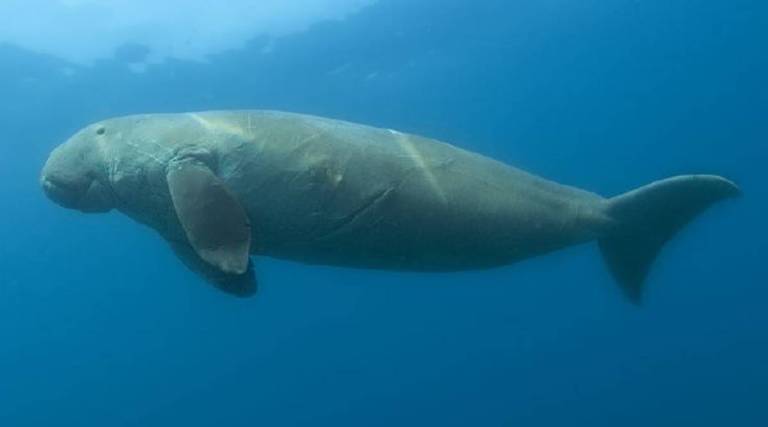
Dugongs(Dugong dugon), also called the sea cow, is a herbivorous mammal. They can grow up to three meters long, weigh about 300 kilograms and live for about 65 to 70 years grazing on seagrass and coming to the surface to breathe.
Conservation Status of Dugongs
IUCN Status: Vulnerable
Indian Wild (Life) Protection Act, 1972: Schedule I
CITES: Appendix I
Habitat: They are found in over 30 countries and in India are seen in the Gulf of Mannar, Gulf of Kutch, Palk Bay, and the Andaman and Nicobar Islands.
Diet: They are largely dependent on seagrass communities for subsistence and are thus restricted to the coastal habitats which support seagrass meadows.
Population: According to a 2013 survey report of the Zoological Survey of India (ZSI), there were only about 200 dugongs in the Gulf of Mannar in Tamil Nadu, the Andaman and Nicobar Islands and the Gulf of Kutch in Gujarat.
Significance of Dugongs
They are an important part of the marine ecosystem, and their depletion will have effects all the way up the food chain.
Threats faced by Dugongs
Loss of seagrass habitats, water pollution and degradation of the coastal ecosystem due to developmental activities have made life tough for Dugongs.
Dugongs are also victims of accidental entanglement in fishing nets and collision with boats, trawlers.
Hybodontshark
News
Recently, teeth of new species of hybodontshark of Jurassic age (approximately, between 160 and 168 million years old) have been reported for the first time from Jaisalmer, Rajasthan.
History of Hybodonts
Hybodonts, an extinct group of sharks, was a dominant group of fishes in both marine and fluvial environments during the Triassic and early Jurassic time.
It started to decline in marine environments from the Middle Jurassic onwards until they formed a relatively minor component of open-marine shark assemblages.
Hybodonts finally became extinct at the end of the Cretaceous time 65 million years ago.
About the recent discovery
The newly discovered crushing teeth from Jaisalmer represent a new species named by the research team as Strophodusjaisalmerensis.
The genus Strophodus has been identified for the first time from the Indian subcontinent and is only the third such record from Asia, the other two being from Japan and Thailand.
Significance of the discovery
This discovery marks an important milestone in the study of Jurassic vertebrate fossils in the Jaisalmer region of Rajasthan, and it opens a new window for further research in the domain of vertebrate fossils.
Greater One-Horned Rhino
News
Assam will mark World Rhino Day — September 22 — with a special ceremony by burning a stockpile of nearly 2,500 horns of the one-horned rhinoceros.
About Greater One-Horned Rhino
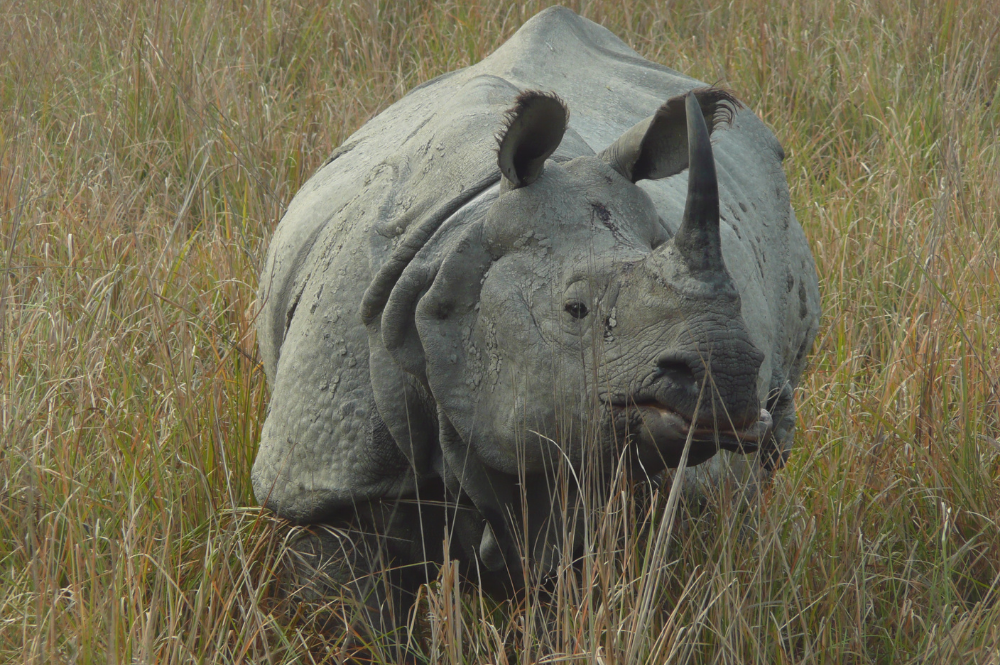
Greater One-Horned Rhino (or “Indian rhino”) are identified by a single black horn about a grey-brown hide with skin folds, which gives it an armour-plated appearance.
The species is solitary, except when adult males or rhinos nearing adulthood gather to graze.
They primarily graze, with a diet consisting almost entirely of grasses as well as leaves, branches of shrubs and trees, fruit, and aquatic plants.
Conservation Status:
IUCN Red List: Vulnerable.
Convention on International Trade in Endangered Species of Wild Fauna and Flora (CITES): Appendix I
Wildlife Protection Act, 1972: Schedule I
Habitat:
Greater One-Horned Rhino is restricted to small habitats in Indo-Nepal terai and northern West Bengal and Assam.
India is home to more than 75% of the greater one-horned rhino population of the world.
In India, one-horned rhinos can be found in Assam, West Bengal, and Uttar Pradesh. Among these states, Assam has the largest population of greater-one horned rhinos, with more than 90% in Kaziranga National Park.
Threats faced by Greater One-Horned Rhino
Poaching of Horns: The rhino horn is used in traditional Chinese medicine to cure a range of ailments, from cancer to hangovers, and it is also used as an aphrodisiac in Vietnam, possessing a rhino horn is considered a status symbol.
Habitat loss: The enormous reduction in the range of rhinos was mainly caused by the disappearance of alluvial plain grasslands.
Population density: High population density in some parks leads to lower breeding rates. Also, concerns exist about long term viability of sub-populations due to lack of genetic diversity.
Conservation measures to protect Greater One-Horned Rhino
- Indian Rhino Vision (IRV) 2020 programme
- New Delhi Declaration on Asian Rhinos 2019
- National Rhino Conservation Strategy for India
Dhole
News
A recent study has identified 114 priority talukas/tehsils where habitats can be consolidated to enhance population connectivity for the Dholes. The study was conducted by scientists from the Non-profit Wildlife Conservation Society–India (WCS-India), National Centre for Biological Sciences, Bengaluru, University of Florida, United States, Non-profit Conservation Initiatives and Centre for Wildlife Studies, Bengaluru.
Key findings of the study
The study found that the Western and Eastern Ghats is a stronghold region for dholes. On the other hand, Central India appeared to be weak in terms of connectivity.
The findings suggested that having a special focus on habitat patches, protected areas and talukas can facilitate the movement of Dholes especially between the Western Ghats and the Eastern Ghats. For that, the study has identified 114 priority talukas/tehsils.
About Dhole
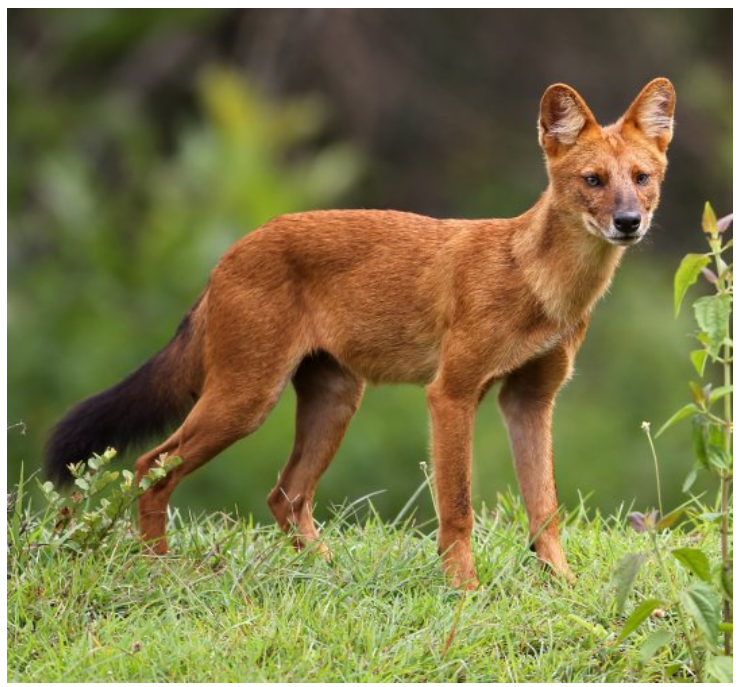
It is also known as the Asiatic wild dog, red dog, and whistling dog. It is about the size of a German shepherd, but looks more like a long-legged fox.
Furthermore, it is a highly social animal, living in large clans without rigid dominance hierarchies and containing multiple breeding females.
They are native to Central, South, East Asia, and Southeast Asia.
Conservation Status
They are listed under
Schedule II species under the Wildlife Protection Act, 1972.
Endangered by the International Union for Conservation (IUCN).
Under Appendix II of theConvention on International Trade in Endangered Species of Wild Fauna and Flora (CITES) list.
Habitat: Dholes occupy a wide variety of climates and habitats, including dense forests, scrub, steppes, and alpine regions. They vary in colour from charcoal grey to rust-red to sandy beige, depending on their habitat.
India: They are found in Western and Eastern Ghats, Central Indian landscape and North East India.
Threats
Depletion of prey base, Habitat loss and transformation, Retaliatory killings due to livestock predation, Disease and pathogens and Competition with other species like Tigers and Leopards for prey.
Platyomia kohimaensis – a new Cicada species
News
Recently a new Cicada species Platyomia kohimaensis was discovered in the Naga Hills. The species was found near the village of Mitelphe within the Kohima district.
This discovery has been made after almost a century. No new cicada was discovered after those found by British entomologists in the Naga Hills in the early 1900s.
About the Cicadas
Cicadas are hemipteran insects. They are known for their loud, complex and species-specific acoustic signals or songs.
Habitat: Most cicadas are canopy dwellers and are found in natural forests with large trees. They act as indicators of a healthy forest ecosystem. They occur more in areas around undisturbed bamboo groves.
Threats: Loss of natural habitat because of clearing of forest land, wildfires, agricultural land and other similar activities.
About the Platyomia kohimaensis
According to the researchers, it sings only in the dusk for a few hours. While most cicadas call during the day.
Distribution of other cicada species
Savazana mirabilis and Salvazana Imperalis: They were discovered in Meghalaya. They prefer only certain tree species found in undisturbed forests.
Chremistica ribhoi (locally called niangtaserand popular as ‘world cup cicada’): They also belong to Meghalaya, surrounding the areas of Nongkhyllem Wildlife Sanctuary.
Hoplosebastes Armatus
News
Researchers have discovered a unique, lesser-known fish species named Hoplosebastes Armatus in the Indian Ocean.This fish species was till now thought to be found only in the Pacific Ocean.
About Hoplosebastes Armatus

Hoplosebastes Armatus is also known as the flower scorpionfish. It belongs to the order of ray-finned fish that is also known as Scorpaeniforme.
This fish was first discovered in the Pacific Ocean off Japan almost a century ago in 1929.
The species has now been found in the Indian Ocean in Digha, West Bengal and Paradip in Odisha.
The fish species found in the Indian Ocean resembles the fish species found in 1929. But it differs in the presence of tentacles on the head, extensive spots on the fins, scale-less maxilla, and a number of spines on sub-orbital stray.
Reason for its presence in the Indian Ocean
The rise in the temperature of sea water due to global warming might have induced the migration of this species from different regions. However, more comprehensive studies are needed to know about this species.
Bengal Floricans
News
Bustard Specialist Group (BSG) of the International Union for Conservation of Nature has written to the Assam government on the urgent need to prevent land-use changes at Kokilabari Seed Farm in the state to protect Bengal floricans and other species.
About Kokilabari Seed Farm
Kokilabari Seed Farm is located in Assam. The farm is only nine square kilometres in area and about one-hundredth of the size of Manas. Yet as many as 25 Bengal floricans have been seen there at one time.
However, Land-use changes at the site and the plan to convert the farm into a university campus is posing a threat to the Bengal Florican.
About Bengal Floricans
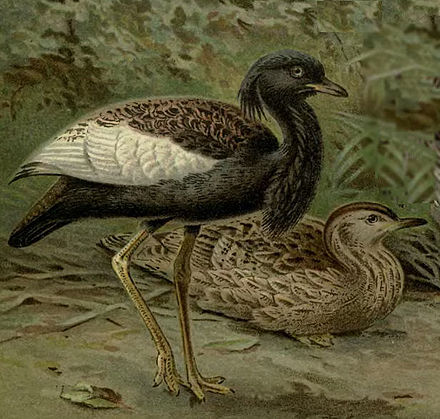
Bengal floricans (Houbaropsis bengalensis) are also called Bengal bustards. They inhabit lowland dry, or seasonally inundated, natural and semi-natural grasslands often interspersed with scattered scrub or patchy open forest.
Conservation status:
- IUCN Status:Critically Endangered
- Indian Wildlife Protection Act,1972:Schedule-I
- Convention on Migratory Species(CMS): Appendix 1
Found in: The species is found in very small numbers in India and Cambodia. About a hundred of them are present in Nepal, and the species is extinct in Bangladesh.
India: In India, the species habitat lies in the floodplains of the country’s two largest rivers, the Ganga and the Brahmaputra.
In the Ganga floodplains, Bengal floricans are found in the state of Uttar Pradesh at places like the Dudhwa and Pilibhit Tiger Reserve.
In the Brahmaputra delta, the species is found in Jaldapara National Park in West Bengal, Kaziranga and Manas National Parks in Assam and the D’Ering Wildlife Sanctuary in Arunachal Pradesh.
Threats: The populations are in decline and threatened by habitat loss through drainage, conversion to agricultural land and plantations, the invasion of alien species, and dam construction.
Allium negianum
News
A team of researchers has discovered a new species of the genus Allium named “Allium negianum” from the Uttarakhand Himalayan region of India.
About Allium
Allium is one of the largest genera in Amaryllidaceae, a family of herbaceous, mainly perennial and bulbous flowering plants.
The genus has about 1,100 species distributed worldwide, including onion, garlic, scallion, shallot and chives.
The genus naturally occurs in dry seasons in the Northern Hemisphere and South Africa.
About Allium in India
The Indian Allium is distributed in different eco-geographical areas of the temperate and alpine regions of the Himalayas.
The Indian Himalayan region has two distinct centers of Allium diversity, the Western Himalaya (over 85% of total diversity) and the Eastern Himalaya (6%), covering the alpine-sub temperate region.
About the newly discovered Allium negianum
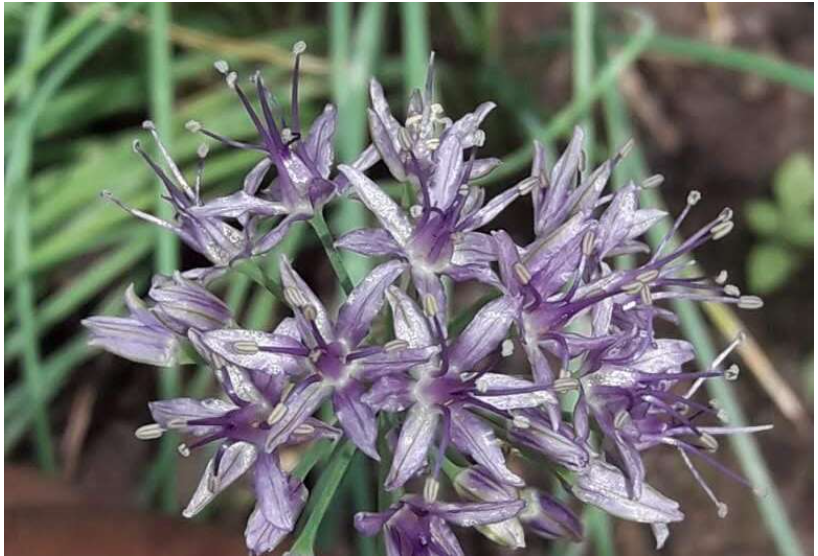
The specific name of Allium negianum honors Dr. Kuldeep Singh Negi, an eminent explorer and Allium collector from India
This plant is restricted to the region of the Western Himalayas. It grows in Malari region of Niti valley in Chamoli district and Dharma valley of Pithoragarh district, Uttarakhand.
It grows at 3,000 to 4,800 m above sea level and can be found along open grassy meadows, sandy soils along rivers, and streams forming in snow pasture lands along alpine meadows.
Georissa
News
Researchers have recently discovered a micro snail species named Georissa mawsmaiensis from Mawsmai, a limestone cave in Meghalaya.
This is significant as the last discovery of the same genus was made in 1851. The species was named as Georissa saritta. It was collected and described from the Musmai (Mawsmai today) valley near Cherrapunjee by WH Benson.
About Georissa

Georissa is a genus of minute land snails. They are widely distributed across and reported from Africa, Asia, and the Pacific.
However, they are confined to microhabitats consisting of limestone caves or karst landscapes formed by the dissolution of limestone.
They are also found in soil or subterranean habitats in lowland tropical forests as well as high altitude evergreen forests or on rock surface rich in calcium.
About Mawsmai cave
Source: Wikipedia
Mawsmai cave is situated in the small village of Mawsmai, around four kilometres from Cherrapunjee (Sohra) in the East Khasi Hills district of Meghalaya.
The term ‘Mawsmai’ means ‘Oath Stone’ in the Khasi language. The Khasi people use the local term ‘Krem’ for the cave.
The cave is located at an altitude of 1,195 metres above sea level and is indirectly influenced by the streams of the Kynshi river originating from the East Khasi Hills.
Aborichthys
News
Department of Zoology of Dera Natung Government College of Itanagar in Arunachal Pradesh has discovered three new species of fish of genus Aborichthys of family Nemachelidae.
About the three fish species
The three fish species discovered have been named as Aborichthys uniobarensis, Aborichthys barapensis and Aborichthys palinensis.
These fish species are distributed in streams like Senki, Barap and Palin, which are the tributaries of Brahmaputra river system.
About Aborichthys

Aborichthys is an elongate and slender-bodied bottom-dwelling freshwater stone loach fish that inhabits the moderate-to-fast flowing water of mountain rivers, streams and drainages of the Brahmaputra river basin. These fishes are endemic to the eastern Himalayas.
The fishes of this species are characterised by narrow oblique bars on the body, with a black ocellus at the upper extremity of the caudal-fin base and a rounded or truncated caudal fin.
About Arunachal Pradesh and its Rich Biodiversity
Arunachal Pradesh is known for its rich biodiversity. It is located in the Eastern Himalaya which is one of the four major biodiversity hotspots of India. The region is endemic to more than 20% of fauna of India, including the fish species.
Gray or Hanuman Langur
What is the news?
A troop of Gray or Hanuman langurs with their fur/hair coloured blue, due to exposure to chemical-based dyes, was spotted in an industrial neighbourhood of Ankleshwar in Gujarat recently.
About Gray or Hanuman Langur (Semnopithecus entellus)
Conservation status
– IUCN red list = LC (Least Concern)
– CITES = Appendix -I
– Wildlife Protection Act, 1972 = Schedule I
Distribution: They are found across South Asia. Its 16 subspecies’ range extends from the Himalayas in the north to peninsular India in the south. The bulk of the gray langur distribution is within India. In the Indian Subcontinent, their distribution is reported in Bhutan, northern India and Nepal.
Presence in India: Hanuman Langurs are found in almost all the parts of India. They are easily spotted in the Bandhavgarh National Park and Sariska Tiger Reserve.
Habitat: It is found both in forests and near human habitations. They prefer tropical, dry thorn shrub, pine and alpine forests as well as urban areas.
Snow leopards
What is the News?
According to a report, the remote mountains of inner Asia could witness future pandemics which could threaten both humans as well as non-human species such as snow leopards.
About Snow Leopard

Conservation status:
- IUCN Red list Status:Vulnerable (VU)
- CITES: Appendix I
- Indian Wildlife (Protection) Act 1972: Schedule I
Snow Leopard is also listed in the Convention on Migratory Species (CMS).
Scientific Name: Panthera uncia
Habitat: It lives at high altitudes in the steep mountains of Central and Southern Asia, where the climate is extremely cold.
Diet: Snow leopards are carnivores that actively hunt their prey.
Range Countries: It is found in 12 range countries namely Afghanistan, Bhutan, China, India, Kazakhstan, Kyrgyzstan, Mongolia, Nepal, Pakistan, Russia, Tajikistan, and Uzbekistan.
Range in India: It is found in higher Himalayan and trans-Himalayan landscapes in the states/union territories of Jammu and Kashmir, Himachal Pradesh, Uttarakhand, Sikkim, and Arunachal Pradesh.
State Animal: It is the State animal of Himachal Pradesh
Indicator Species: Snow Leopard (also known as the Ghost of the mountains) acts as an indicator of the health of the mountain ecosystem in which they live. It is because of their position as the top predator in the food web.
Snow Leopard capital of the world: Hemis, Ladakh.
Conservation initiatives
Global Snow Leopard and Ecosystem Protection Program (GSLEP): GSLEP is a unique alliance of range of country governments and non-governmental partners established in 2013.
Origin: In the 2013 Bishkek Declaration, the 12 snow leopard range countries endorsed a comprehensive, long-term Global Snow Leopard Conservation Program. This led to the launch of GSLEP
Aim: To address high-mountain development issues using the conservation of the charismatic and endangered snow leopard as a flagship.
Secretariat: Its program Secretariat is based in Bishkek, Kyrgyzstan.

